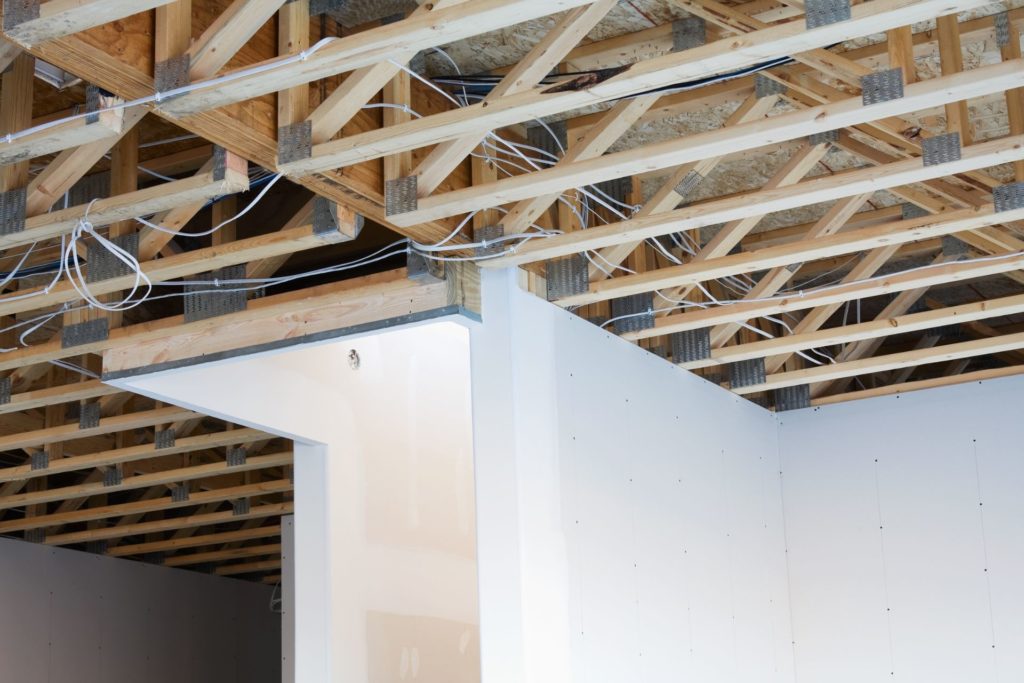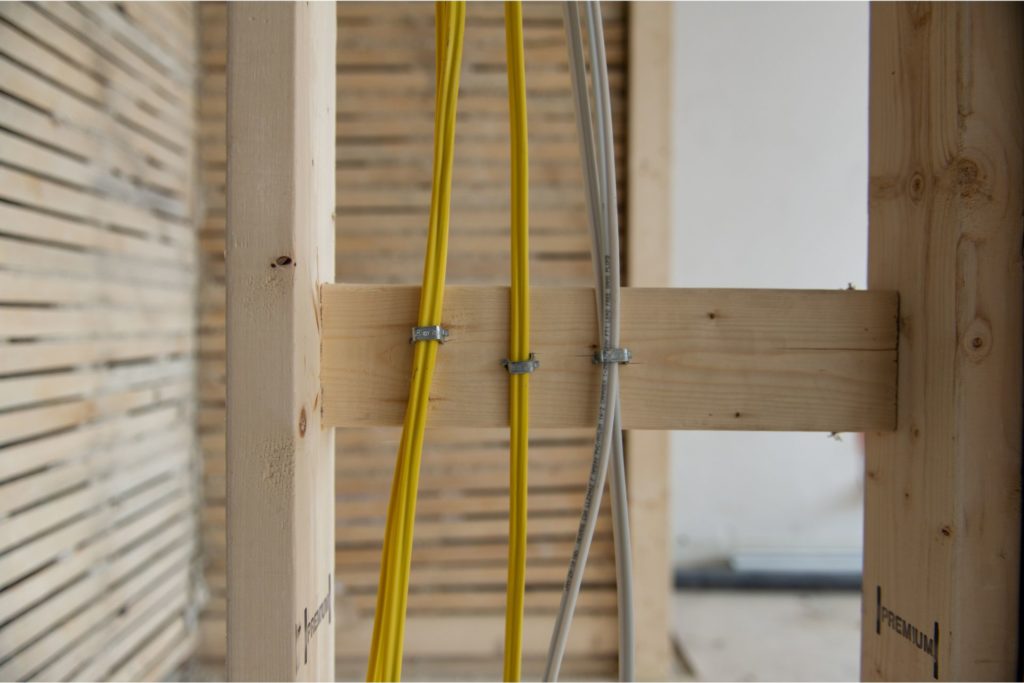Have you ever stopped to consider the type of wiring you have in the attic? If you want to wire an attic, you should answer this question before proceeding. The last thing you want is to break your area’s regulations by installing the wrong type of wire. But what is the correct type of wire, and how can you protect it from harm?
Can I Run Romex In Attic?
You can run Romex in the attic. Some laypeople agree that attics require non-metallic cables. However, they don’t know how Romex fits into the picture. But this only happens because they think Romex is a type of wire, which is not the case. Romex is a brand, and it can work in attics because Romex is a non-metallic cable.
Conduits are not a requirement. You only run wires through a conduit in response to the threat of physical damage.
Admittedly, it isn’t up to you. Check your area’s regulations. What do they have to say about wires in the attic? Contractors will do whatever the building code says.
Some homeowners prefer to perform these installations themselves. However, again, you have to check the regulations. If they prohibit homeowners from performing electrical installations without a license, you don’t have a choice. You need to hire a licensed electrician.
What Type of Romex Should I use?
Attics are complicated places. They are part of the house. However, they also feel separate.
- When it comes to installing wires, you have to consider the various threats, including pests and temperature fluctuations.
- The location matters. Even though contractors attach the conductors to the sides of the attic, many homeowners won’t hesitate to run the cables along the floor.
- Either way, people tend to use non-metallic sheathed cables. Although, you can also use an armored cable if the situation calls for it. Armored cabling works if you want to avoid fraying, but conduits don’t interest you.
- Where the size is concerned, aim for 12AWG. 12AWG is not the thickest gauge, but it can carry a significant amount of current.
How Do I Protect My Romex Wire In The Attic?
You have to protect the cables in your attic. People ruin attic wires all the time. They do this unintentionally by placing boxes on the conductors and moving them back and forth, destroying the jacket.
They will also walk on the cables when entering or leaving the attic. Every so often, someone’s foot will get caught on a wire, and they will tag at it while trying to get free.
These accidents seem minor, but they matter because damaged cables can short circuit. The last thing you want is arcing in an attic. Don’t forget: many people use the attic as storage.
They keep everything from clothes to newspapers in the attic. So, what do you think happens when arcing occurs? You will ignite the flammable elements, starting a fire that will probably burn your house down.
Because of these risks and more, you should take the following actions to safeguard the wires:
1). First of all, the NEC wants contractors to protect wires in an accessible attic. Granted, the conductors have to meet specific conditions. For instance, they must run across the floor joists.

You should also protect them if the contractor added them to the rafters or studs. These rules are equally applicable to wires near the attic’s opening (within six feet).
In other words, you don’t have a choice in the matter. You cannot choose to leave the wires exposed, not unless your local building code has given you permission to do so.
Many people follow the NEC’s regulations, and for a good reason. Local rules and regulations typically enforce the standards set by the NEC. That being said, some locations have unique codes that differ from the NEC.
If local regulations contradict the NEC, you must follow the local rules. They take precedence. Do not act without consulting a professional, especially if you don’t even know what the local regulations say.
2). But how do you actually protect the wires in an attic? You need guard strips. Add them to either side of the wire.
3). Bore holes in the sides of the joists and pull the cables through to keep them safe. Naturally, you can’t just bore holes wherever you want. Check your regulations. What do they have to say about the size and location of the holes?
The last thing you want is to weaken the joists. Even if you have the skill, boring through structural members is out of the question. You must hire an engineer. You cannot proceed without their approval.
4). Don’t just place boards on the cables. This practice seems harmless, but it compresses the wires, pushing them against the floor joists. The edge of plywood can easily cut into the line, breaking the jacket and exposing the conductors.
Does this mean you can’t install boards on the floor? Not necessarily. The key is to notch the joists to create pockets for the conductors to occupy. If you don’t know how this process works, use guard strips.
5). You don’t have to run the cabling across the joists. If you don’t want to tamper with the pre-existing insulation, you can run the wires across the rafters.
But you need guard strips. Some people will staple the cables to hold them in place. Although, you are better off using studs to secure the wires.
6). Insulation is a must-have. You need it to fight extreme temperatures and fluctuations. However, you should inspect the wires beforehand. Is the jacket whole?
You don’t want the conductors inside to touch the insulation. They are going to generate heat once you turn the power on. This worries because you run the risk of melting the insulation and starting a fire.
But this has a solution. Fiberglass insulation will add a fireproof element to your configuration because the material is nonflammable. Unfortunately, many homeowners use cellulose fiber. It is the more popular option. But it is flammable.
7). If you have tangible threats in the vicinity, pull the wires through a conduit. You cannot trust these conductors to remain safe in the attic. What if the room floods? What if it freezes unexpectedly?
Do you expect the Romex to survive? A conduit will give you peace of mind. Use PVC. The material is light, easy to cut, and affordable. It will repel the many pests that make attics their home.
If you don’t like conduits because of the financial cost and the complexities associated with pulling a conductor through these pipes, use every technique at your disposal to eliminate pests. That includes using bait to catch the rodents and sealing the cracks they keep using to enter the attic.
Does Romex Need To Be Stapled In Attic? How?

You have to secure the cable at intervals of no more than 4 ½’.But you can use any tool that suits you, including straps, ties, and staples. But you shouldn’t damage the cable with the staples. But that goes without saying. Some consumers prefer to stack multiple wires under one staple. However, you should limit these stacked wires to three.
You should only exceed this number if the local regulations permit it. Otherwise, stick to three or fewer wires per staple.
How Far Apart Should Staple Romex Cable In Attic?
You should apply the stapes at intervals of 4 ½’ or less.
What Does The Code Say Running Romex Through Attic?
The NEC has several things to say about Romex in the attic.
- First, you must protect cables running across the joists in an accessible attic with permanent stairs. Guard strips are an effective solution in this situation.
- But what if you don’t have permanent stairs? Use guard strips around cables within six feet of the entrance.
- You don’t need guard strips if the wire is parallel to the sides of joists, rafters, or studs.
- You can run the conductors through bored holes in joists, wood members, or rafters if the edge of the hole is more than 2” from the nearest edge.
How To Run Romex In Attic? Ideas
Every homeowner that wants to run cables through a ceiling must access the attic. Naturally, it is easier and more convenient to hire a professional contractor.
However, homeowners can perform their own installations if they have the skill. The process will involve the following:
1). Access the attic. Do you have stairs? Do you need a ladder? Have you even located the entrance? Look for a hole in the ceiling. Check the hallways and closets.
2). If you want the cables to ascend into the attic at one point before emerging at a different point, measure the distance between those two points. Is the wire long enough to cover the distance?
3). Take a moment to move around in the attic. Do you have a floor to walk on? Is the footing secure? Do whatever it takes to make your presence in the attic more comfortable.
This might involve laying boards and planks on the floor to make it easier to walk and stand.
4). Do you have a reliable light source? You cannot operate in the dark, not in a place as dangerous as the attic. If you have a light source, survey the attic. Do you see other wires? Create a plan that allows you to install the new cables without interfering with the old wires.
5). Arm yourself with the relevant tools, including gloves and goggles.
6). Make a hole and pull the wire into the attic. You can also repurpose the vents.
7). Run the wires across the attic to the exit hole. Use stapes to secure the conductors.
8). Leave the attic. Find the wires at the exit hole and pull them through before running them to the relevant destinations.

